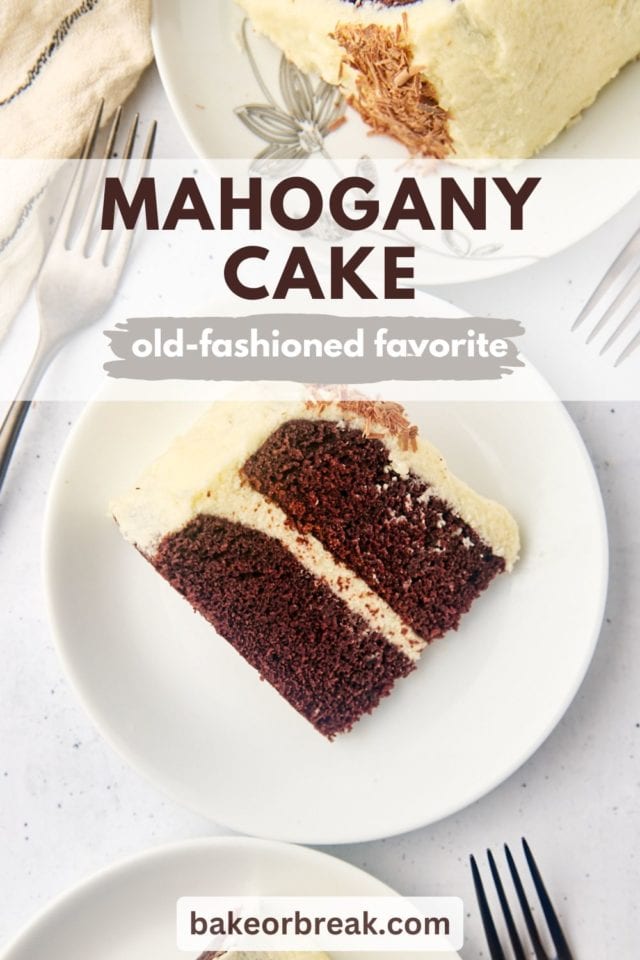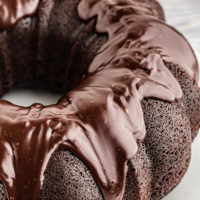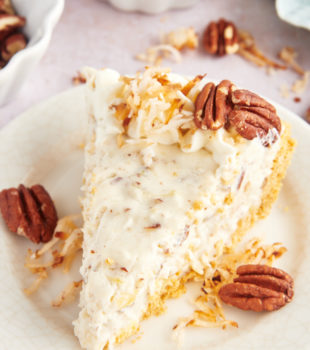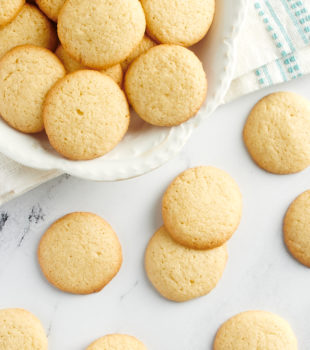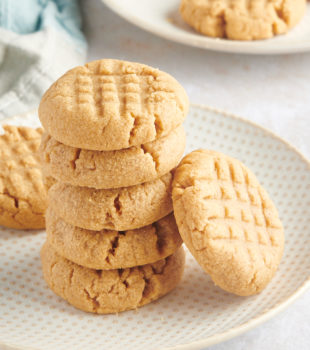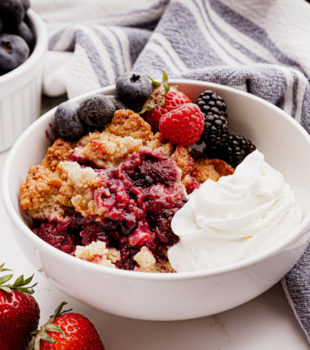Looking for a cake with deep, chocolatey flavor and a tender, fluffy crumb? This mahogany cake has all that and more, making it the perfect dessert for any special occasion or a sweet everyday treat.

This mahogany cake is one of those classic desserts that feels like a little slice of nostalgia. With its subtle chocolate flavor, soft texture, and gorgeous reddish-brown color, it’s a beautiful treat that’s perfect for everything from special celebrations to everyday indulgences. And let’s talk about that frosting! Ermine frosting is light, creamy, and just sweet enough—an ideal match for this vintage favorite.
I recently rediscovered my grandmother’s handwritten recipe and couldn’t wait to share it with you. If you love discovering old-fashioned recipes with timeless appeal, this cake is a must-try. It’s simple, elegant, and oh-so-satisfying!
Why You’ll Love This Mahogany Cake Recipe
- Soft, moist crumb. Made with cake flour and buttermilk, this cake has a delicate, tender texture.
- Rich chocolate flavor. Cocoa powder provides the chocolate flavor without making it too sweet.
- Classic, light frosting. The ermine frosting is smooth, buttery, and less sweet than traditional buttercream. (It’s great on other cakes, too, like carrot cake or hummingbird cake.)
- Beautiful presentation. With its unique color and elegant look, this cake makes an eye-catching dessert for any occasion.
A Brief History of Mahogany Cake
Mahogany cake dates back to the late 19th and early 20th centuries, when it first gained popularity as an elegant dessert with a unique, reddish-brown hue. This color comes from the natural reaction between cocoa powder and baking soda, giving the cake its signature “mahogany” look. Often thought of as a precursor to red velvet cake, mahogany cake was one of the first cakes to use cocoa powder in a way that highlighted its flavor and color rather than overpowering it. With its soft crumb and light chocolate flavor, it has remained a beloved classic, offering a timeless taste that’s both nostalgic and delicious.
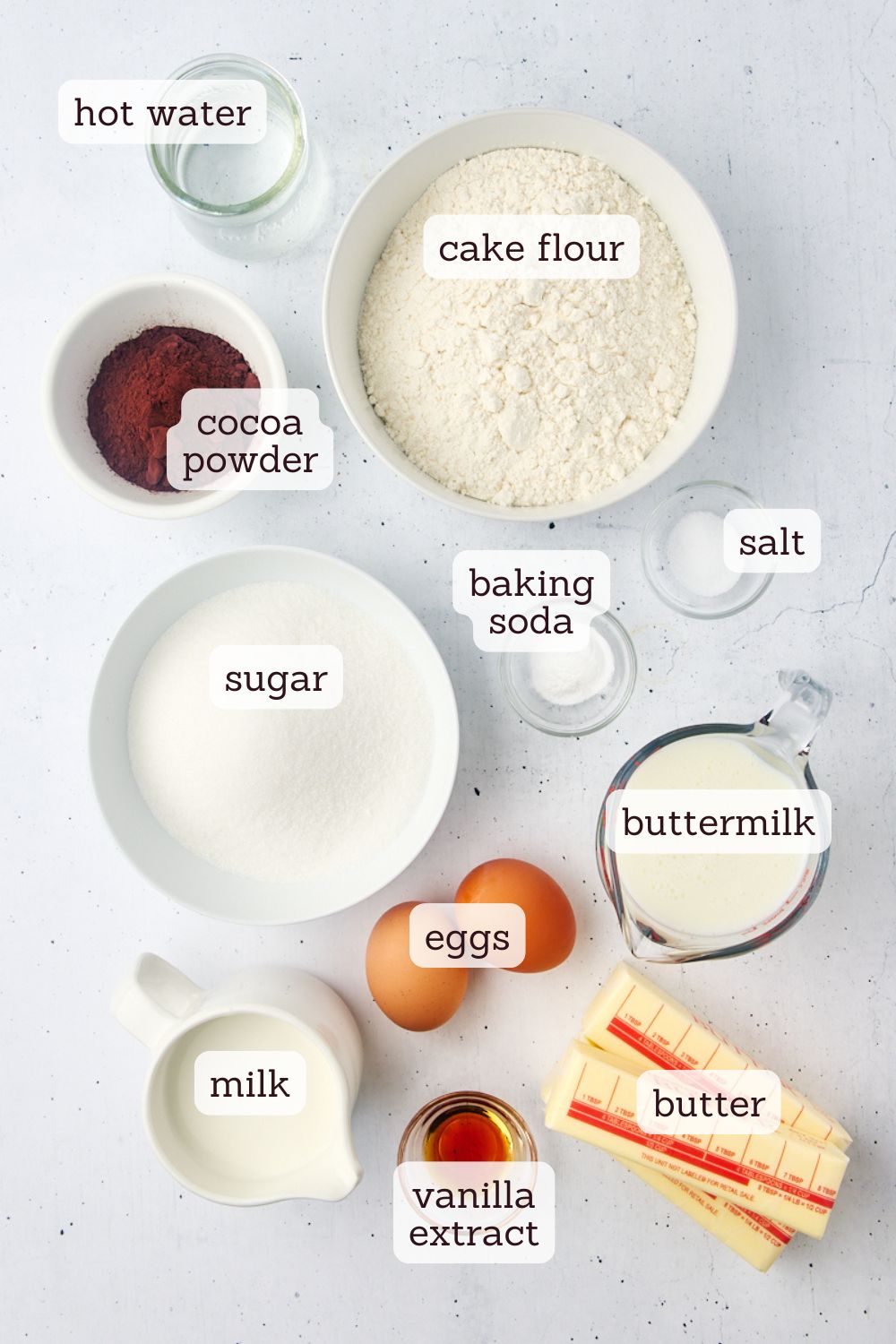
What You’ll Need
See the recipe card below for ingredient quantities and full instructions.
For the cake:
- Cake flour – Cake flour has a lower protein content than all-purpose flour, resulting in a delicate, fine crumb. It’s ideal for cakes like this one that benefit from a soft, tender texture.
- Cocoa powder – Opt for a good-quality, unsweetened natural cocoa powder.
- Baking soda
- Salt
- Unsalted butter – Let the butter soften at room temperature before mixing.
- Granulated sugar
- Eggs – Allow these to come to room temperature as well for easier mixing and a fluffier cake texture. I recommend baking with large eggs.
- Buttermilk – This helps make the cake soft and moist. I recommend using buttermilk if possible, but you can use a substitute if necessary. Set this out along with the eggs so it can come to room temperature.
- Vanilla extract – Adds warmth and enhances the other flavors without overpowering the chocolate.
- Hot water – Blooming the cocoa powder with hot water intensifies the chocolate flavor, making the cake rich without needing a lot of cocoa. It doesn’t need to be boiling, but it should feel quite hot to the touch.
For the frosting:
- Milk – I recommend using whole milk here.
- All-purpose flour – The flour acts as a thickening agent in the frosting’s milk mixture, giving it structure without heaviness.
- Granulated sugar – This provides sweetness without the density of powdered sugar, creating a light and smooth frosting texture once it’s fully whipped.
- Salt
- Unsalted butter – Be sure it’s softened for smooth mixing; if it’s too firm, the frosting may not reach the desired fluffy consistency.
- Vanilla extract
How to Make Mahogany Cake
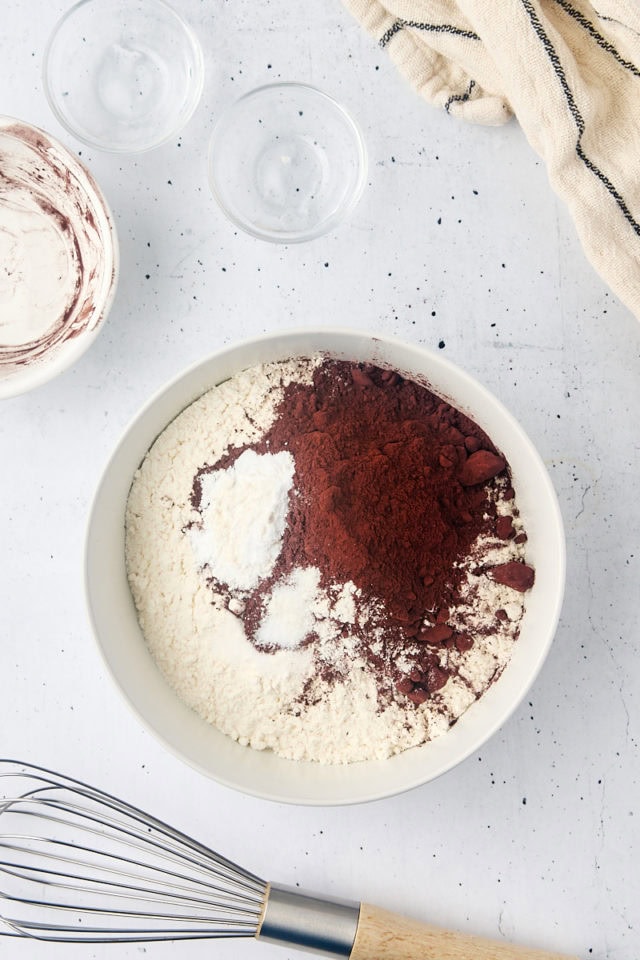
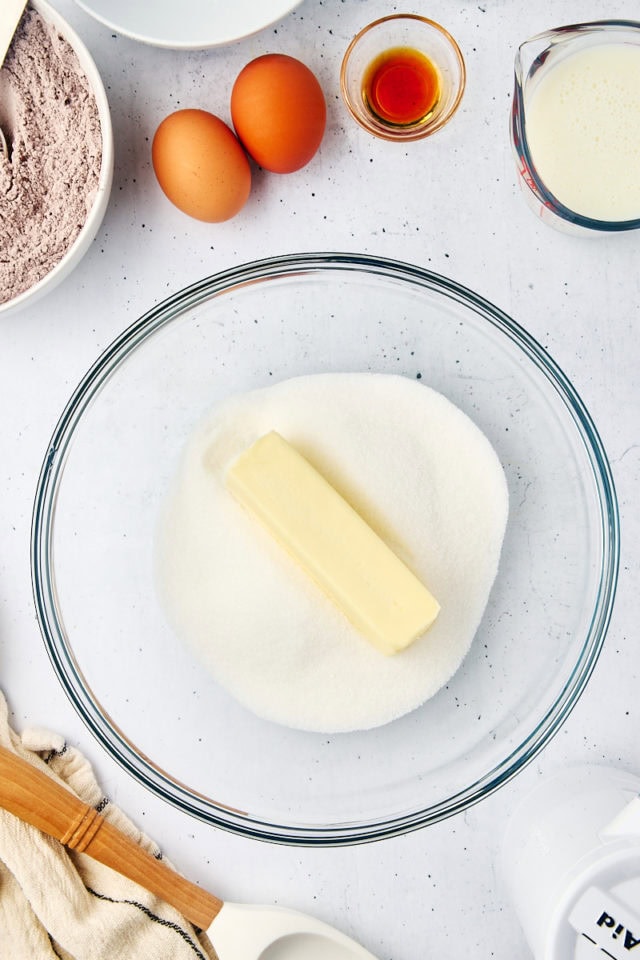
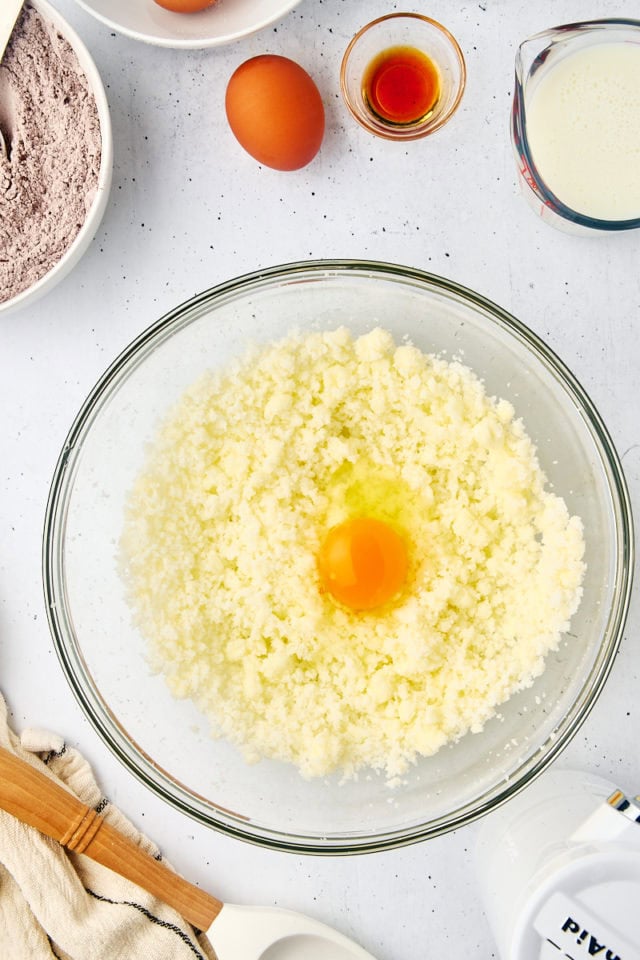
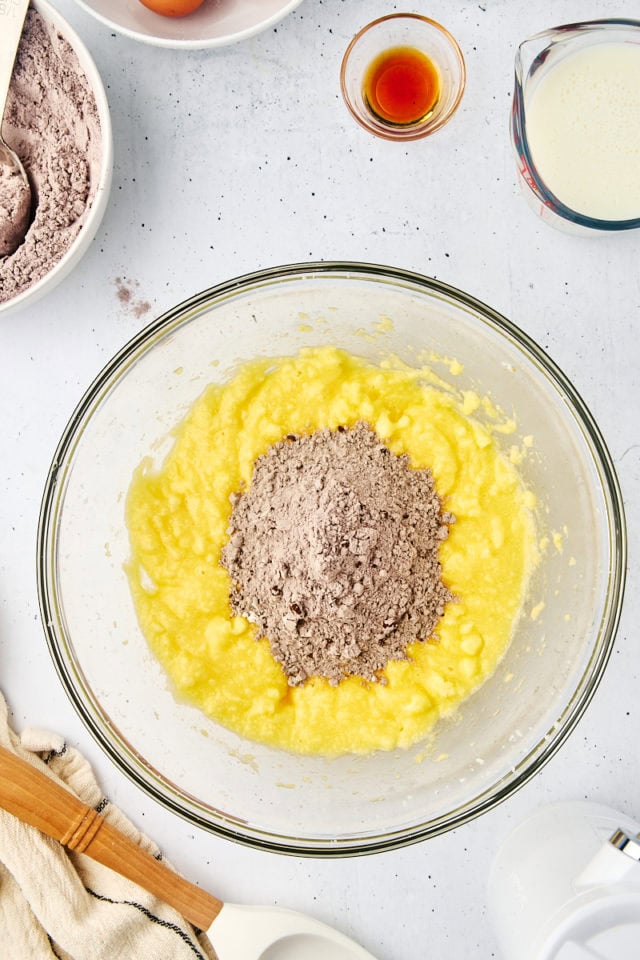
- Prepare for baking. Heat the oven to 350°F. Grease two 8-inch round cake pans and line with parchment paper.
- Mix the dry ingredients. Whisk together the flour, cocoa, baking soda, and salt.
- Start mixing wet ingredients. Beat the butter and sugar until light and fluffy, then mix in each egg.
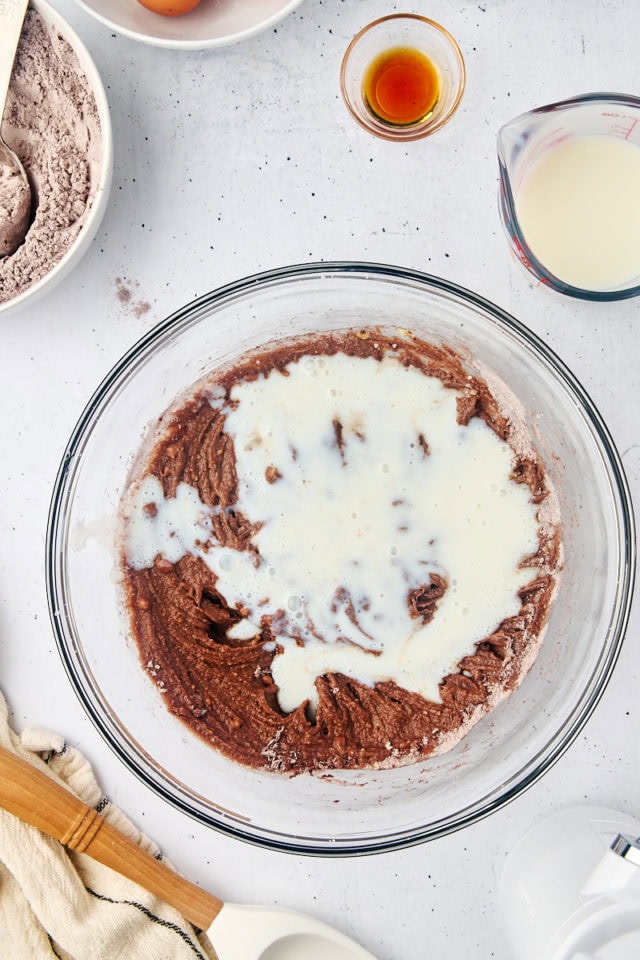
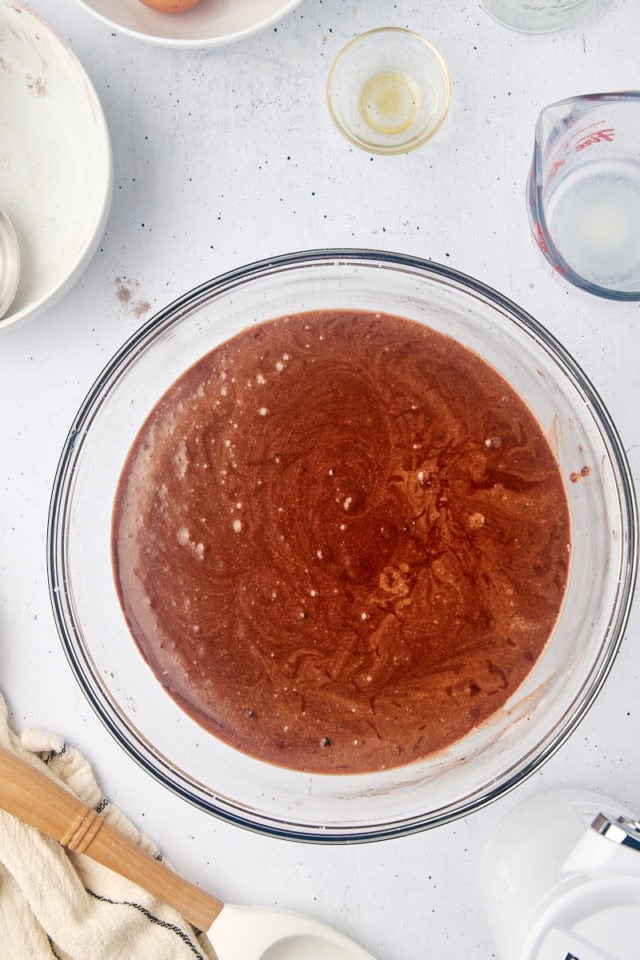
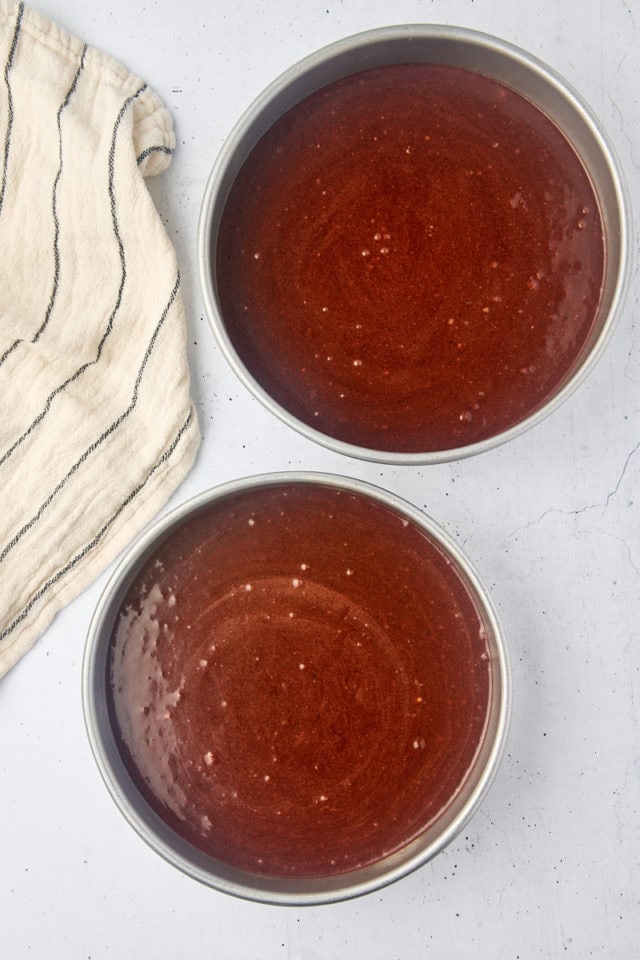
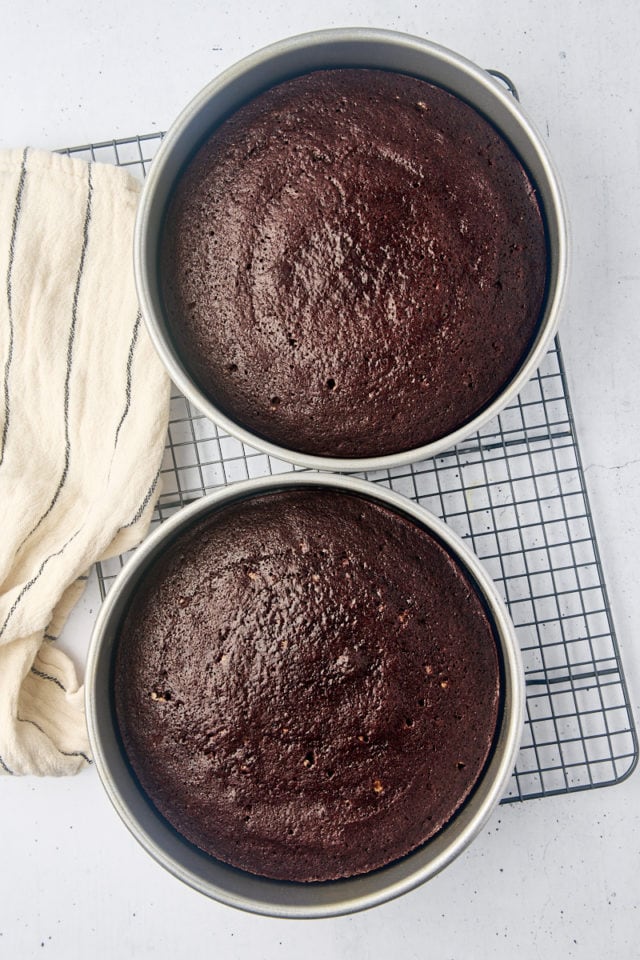
- Finish the batter. Add the dry ingredients, alternating with the buttermilk. Stir in vanilla and hot water.
- Bake. Divide the batter evenly between the pans, and bake 35-40 minutes. A toothpick inserted into the center should come out clean.
- Cool. Place the pans on wire racks for 10 minutes before flipping the cakes onto a rack to cool completely.
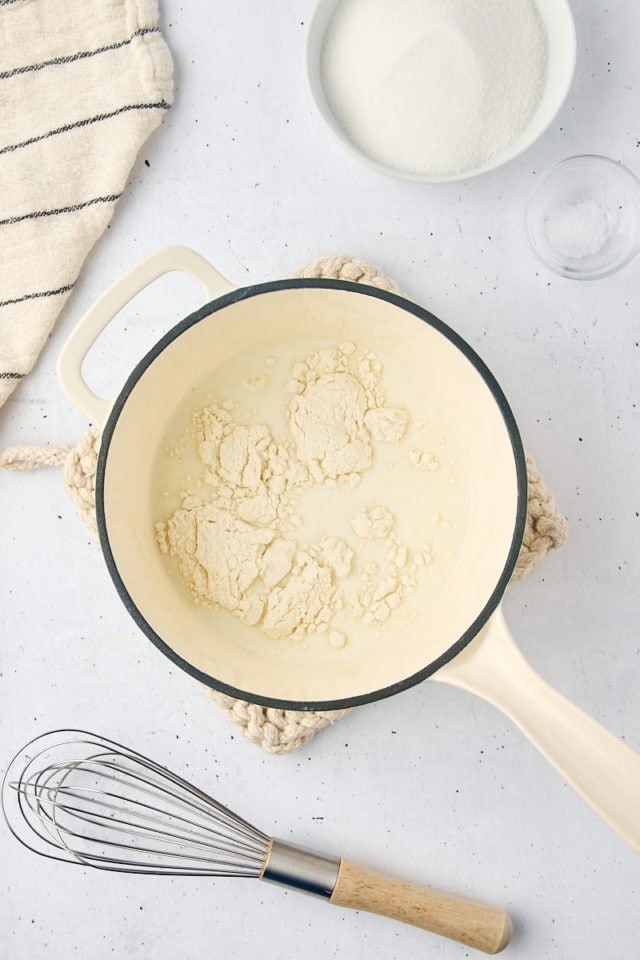
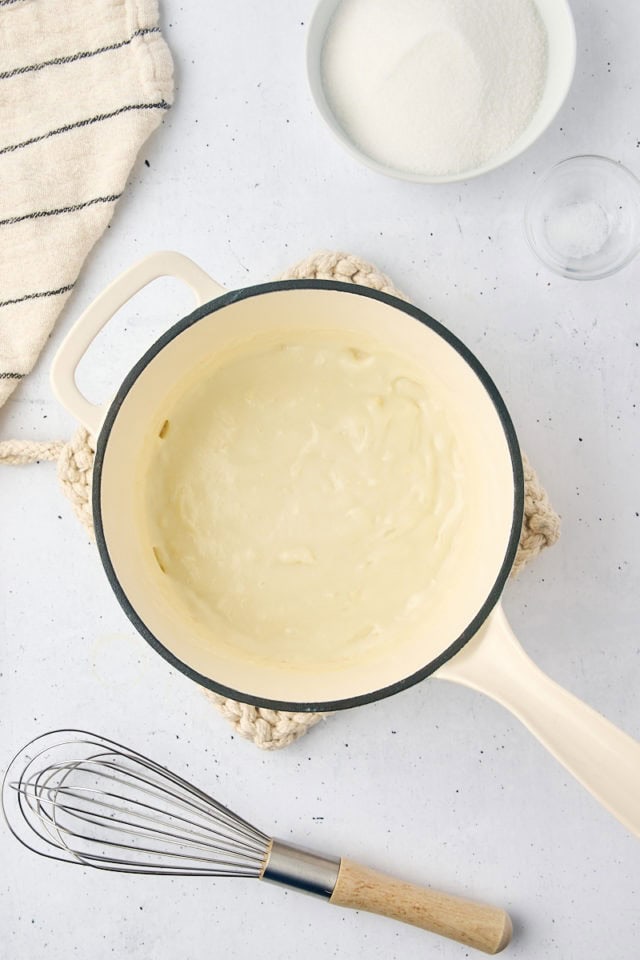


- Start making the frosting. Whisk milk and flour in a saucepan over medium heat until thickened. Then remove from the heat and whisk in the sugar and salt. Place plastic wrap directly onto the surface, and cool to room temperature.
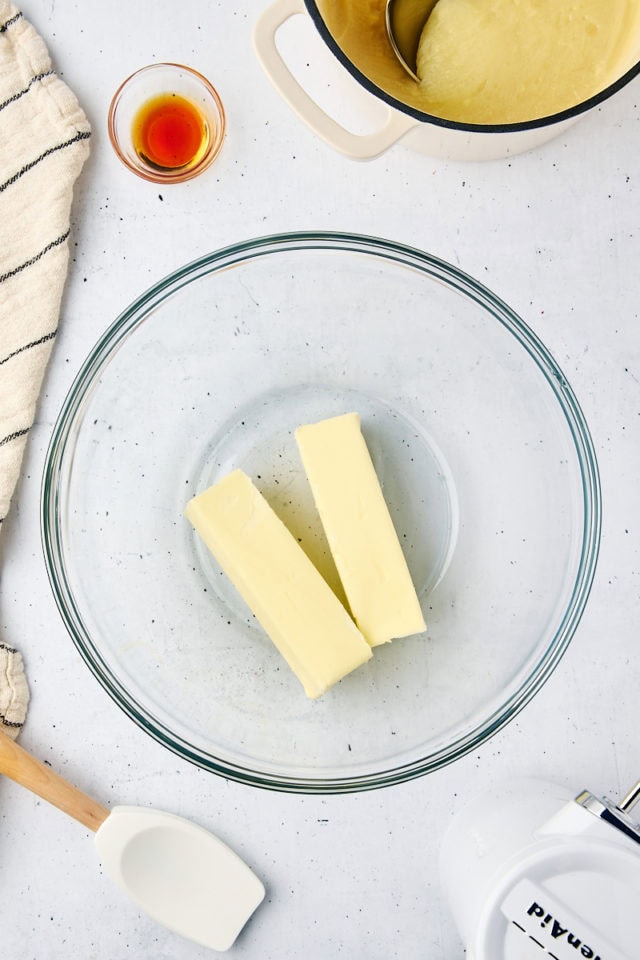
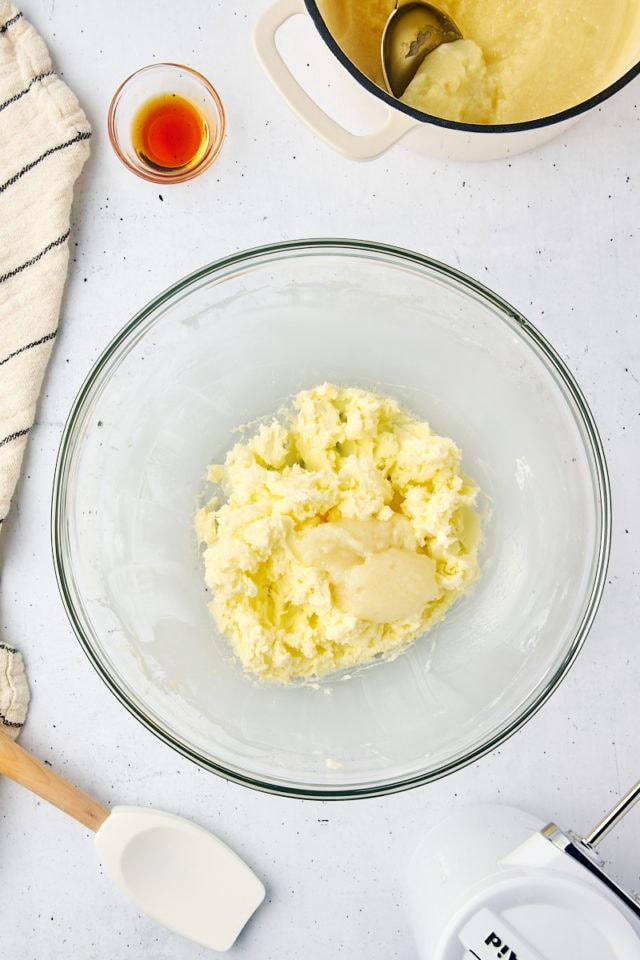
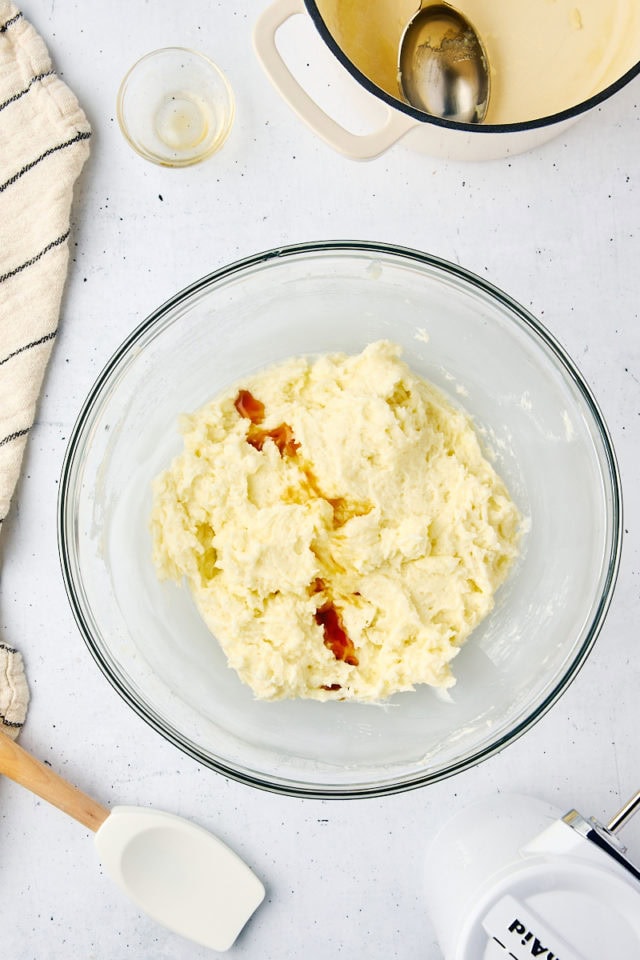

- Finish the frosting. Beat the butter until light and fluffy, then slowly add the cooled milk mixture. Beat until light and fluffy. Finally, mix in the vanilla.
- Frost the cake. Place one cooled cake layer on a serving plate and frost the top. Place the other layer on top, and frost the top and sides. Garnish as desired.

Tips for Success
- Temperature matters. Soften the butter and bring the eggs and buttermilk to room temperature before starting. This ensures they blend smoothly into the batter, creating a uniform texture and better rise.
- Measure carefully. For the best results, use a kitchen scale to measure your flour and cocoa powder. Too much flour can make the cake dense, while too little can affect structure. If you don’t have a scale, be sure to spoon and level the flour rather than scooping.
- Don’t over-mix. Once you add the flour mixture, mix just until combined. Over-mixing can lead to a denser, tougher cake. Stop mixing as soon as you don’t see any dry streaks in the batter.
- Level cake layers if needed. If your cake layers have domed tops, you can use a serrated knife to carefully slice off the rounded part to create an even, flat surface. This will help the layers stack neatly and keep your cake looking polished. For best results, let the layers cool completely before leveling to avoid crumbs.
- Make a smooth frosting. Make sure the milk-flour mixture is completely cool before adding it to the butter. This will ensure the frosting stays fluffy and smooth.
- Cool completely before frosting. Let the cake layers cool fully on a wire rack before frosting. This prevents the frosting from melting and helps it set better on the cake.
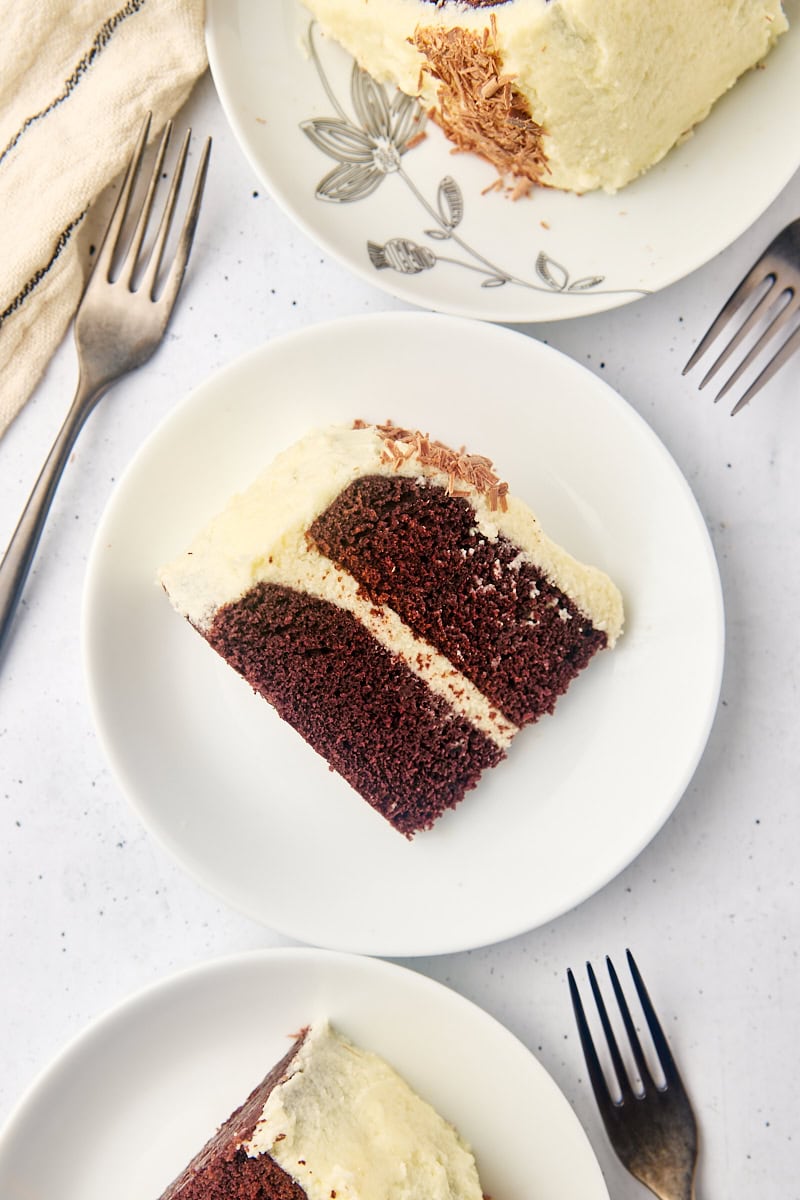
Variations and Serving Suggestions
- Chocolate frosting. For a richer cake, swap the ermine frosting for a chocolate buttercream. Chocolate frosting adds a decadent touch and complements the cocoa in the cake beautifully.
- Cream cheese frosting. For a tangy contrast to the cake’s sweetness, top it with a classic cream cheese frosting. It’s especially good if you prefer a slightly less sweet option.
- An espresso kick. Add 1-2 teaspoons of instant espresso powder to the hot water before adding it to the cake batter. This will deepen the chocolate flavor and add a subtle mocha note without overpowering the cake.
- Garnishing ideas. There are a variety of tasty ways to top your mahogany cake. Keep with the chocolate theme with dark or milk chocolate shavings or a dusting of cocoa powder. Fresh berries are a tasty choice, as their tartness pairs nicely with the chocolate, and the vibrant colors look beautiful against the frosting. You could also sprinkle toasted coconut flakes or chopped, toasted nuts over the frosting for a bit of extra texture and flavor. Coconut adds a tropical flair, while nuts bring an earthy, toasty element.
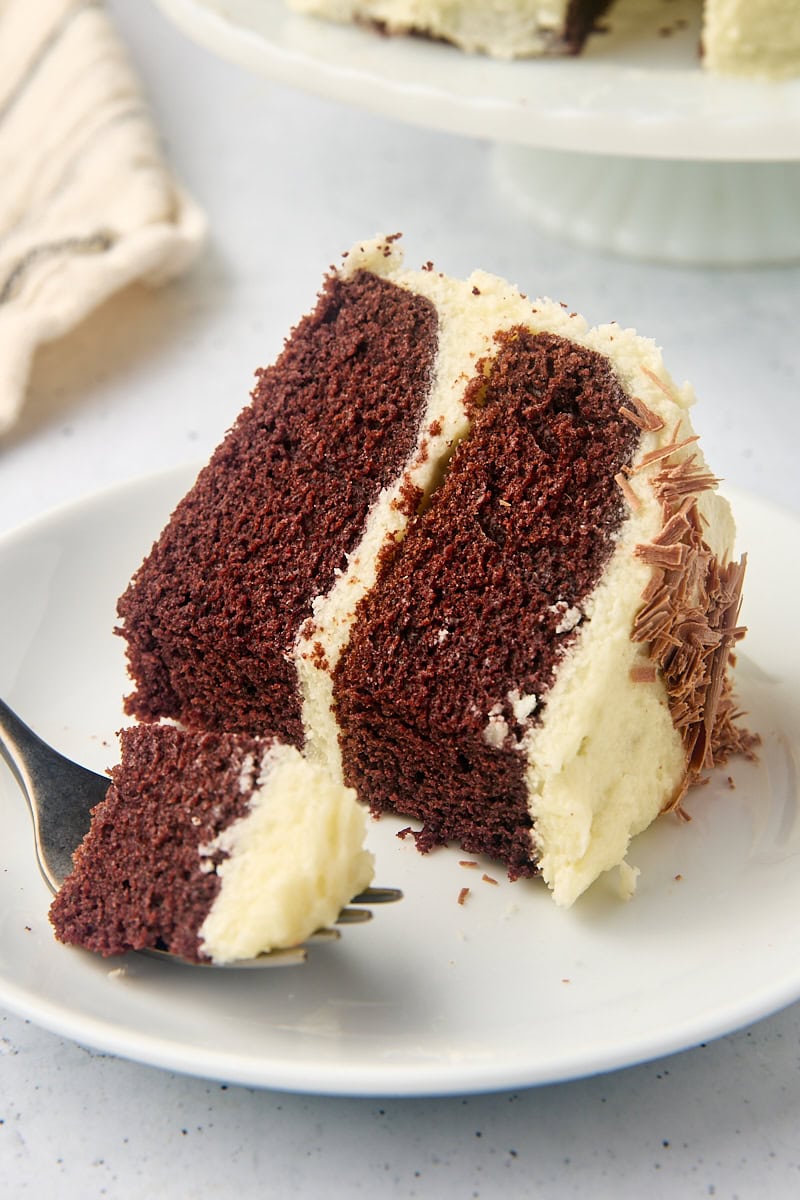
How to Store
- Room temperature: If you’re planning to enjoy the day it’s made, it can be stored at room temperature. Place it under a cake dome or cover it tightly with plastic wrap to keep it moist. Keep the cake in a cool, dry place away from direct sunlight or heat sources, as frosting can soften and the cake may dry out.
- Refrigerator: For storage up to 5 days, refrigerate the cake. Cover it with plastic wrap or place it in an airtight container to prevent it from drying out. For the best flavor and texture, let refrigerated cake slices sit at room temperature for about 30 minutes before serving.
- Freezer: If you’re planning ahead, wrap each layer individually in plastic wrap, then a layer of aluminum foil, or place the wrapped layers in an airtight container. If freezing a fully frosted cake or individual slices, place it in the freezer uncovered for 1-2 hours until the frosting is firm. Then, wrap it tightly in plastic wrap and a layer of foil. When ready to serve, thaw the wrapped cake in the refrigerator overnight, then bring it to room temperature before serving. This helps retain its moisture and prevents the frosting from sweating.
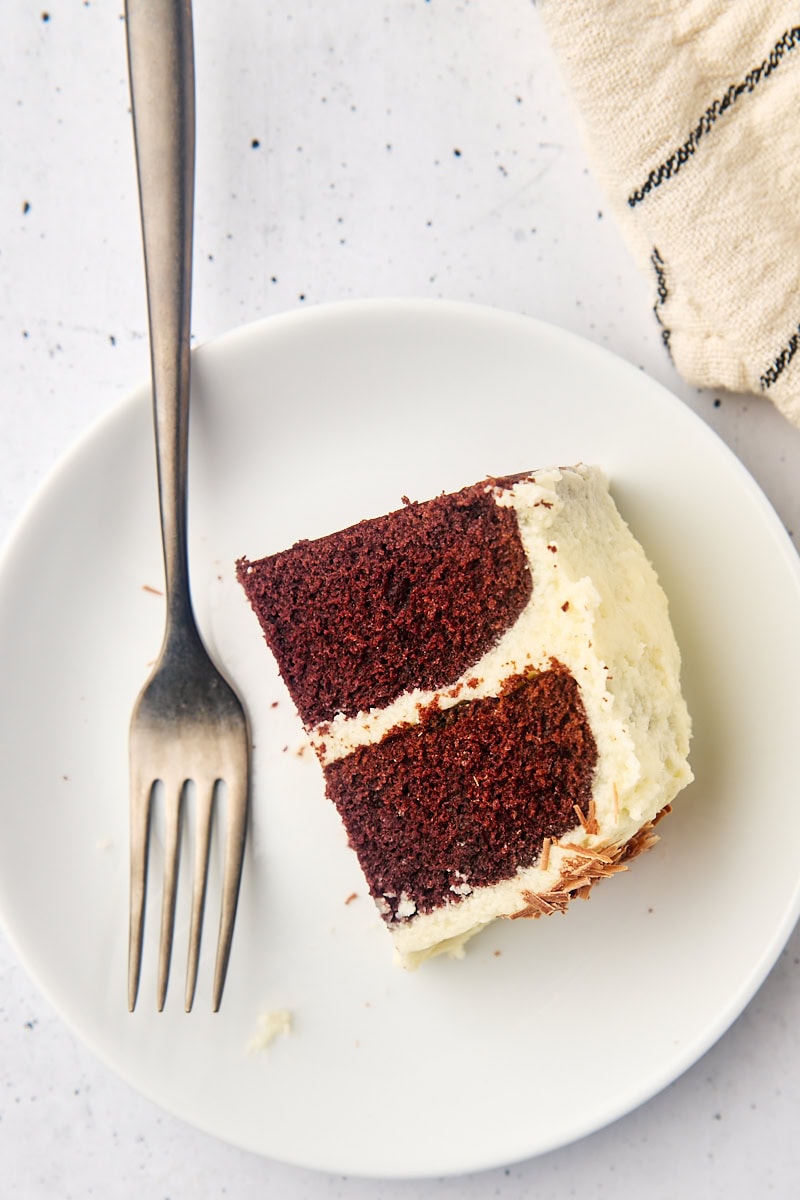
More Chocolate Cake Recipes

Mahogany Cake
Ingredients
For the cake:
- 2 ¼ cups (270 g) cake flour
- ½ cup (42 g) unsweetened cocoa powder
- 1 teaspoon baking soda
- ½ teaspoon salt
- 1 ½ cups (300 g) granulated sugar
- ½ cup (113 g) unsalted butter, softened
- 2 large eggs
- 1 cup (240 ml) buttermilk
- 1 teaspoon vanilla extract
- ½ cup (120 ml) hot water
For the ermine frosting:
- 1 cup (240 ml) whole milk
- 5 tablespoons (38 g) all-purpose flour
- 1 cup (200 g) granulated sugar
- pinch salt
- 1 cup (226 g) unsalted butter, softened
- 1 teaspoon vanilla extract
Recommended Products
Instructions
To make the cake:
- Preheat the oven to 350°F (175°C). Grease two 8-inch round cake pans and line the bottoms with parchment paper.
- Whisk together the flour, cocoa powder, baking soda, and salt. Set aside.
- In a large mixing bowl, beat the butter and sugar with an electric mixer until light and fluffy. Add the eggs one at a time, beating well after each addition.
- Gradually add the dry ingredients to the butter mixture in three portions, alternating with 2 portions of buttermilk. Mix until just combined.
- Stir in the vanilla extract and hot water. The batter will be thin.
- Divide the batter evenly between the two prepared cake pans. Bake for 35-40 minutes or until a toothpick inserted into the center comes out clean.
- Allow the cakes to cool in the pans for 10 minutes, then turn them out onto wire racks to cool completely.
To make the frosting:
- In a small saucepan, whisk together the milk and flour over medium heat. Cook, stirring constantly, until the mixture thickens into a smooth, pudding-like consistency (about 5-7 minutes).
- Remove from the heat and whisk in the sugar and salt. Let it cool completely to room temperature. Then cover it with plastic wrap, pressing the wrap directly onto the surface to prevent a skin from forming.
- In a large mixing bowl, use an electric mixer to beat the butter until light and fluffy (about 3-5 minutes).
- Gradually add the cooled milk-flour mixture to the creamed butter, one spoonful at a time, beating until smooth and fluffy. The frosting should become light and airy.
- Mix in the vanilla extract, beating until well combined. (It should have a light, fluffy, and silky consistency. It’s a bit like whipped cream but with more structure.)
- Place one cake layer on a serving plate. Spread a layer of frosting on top. Place the second cake layer over the first and frost the top and sides of the cake.
Notes
- Store tightly covered in the refrigerator up to 5 days.


